Nearly every recognized designer label associated with fashion has found its way into the sunglasses business. From progressive stylist Vivienne Westward to celebrity icon Britney Spears, there is a growing selection of designer eyewear on the market ensuring that consumers in Taiwan never run short of choices.
Once monopolized by European brand names, now most optical outlets and department stores stock a selection of Japanese labels vying to provide the latest innovative eyewear. The Asian brands are often preferred for their original handcrafted designs that are not so easily replicated.
"Like hand bags, 90 percent of the impostors [fake brand-name sunglasses sold illegally] are well made and most people cannot tell the difference," said Yang Ming-zhe (
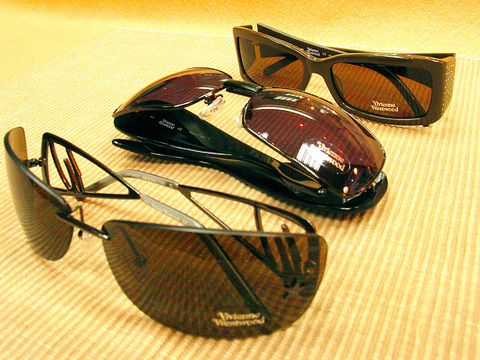
PHOTOS COURTESY OF VIVIENNE WESTWOOD
According to Yang, brand seekers are turning to Japanese labels and finding the Asian-designed vision wear to be more suited to their face shape.
High-end brands like Dolce & Gabbana, Chanel, Christian Dior, Fendi and Prada are being outsold in Taiwan by Japanese newcomers Yellows Plus, Spivvy, Spec Espace, Christian Roth, and Less Than Human, said Toshimoto Shou (
"European glasses are manufactured with a Caucasian face shape in mind; Japanese designers make glasses to suit an Asian face shape," he said and explained that the differences include wider, more rectangular eye frames and lenses with a slighter nose bridge.
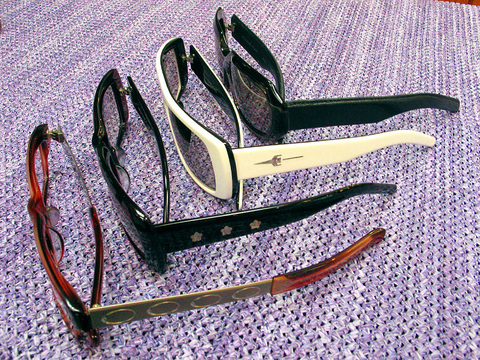
PHOTO COURTESY OF YELLOWS PLUS
2005 FASHION EYEWEAR
Japanese brands tend to be more conservative and basic in shape and color than European designs, but their urban and vintage-inspired looks are equally unique and trendy.
Japanese manufactures favor handmade or finished work and the result is detailed craftsmanship and touches that set their work apart form other brands.
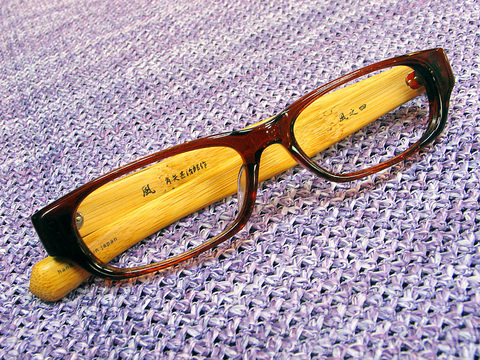
PHOTO COURTESY OF KO DOYA JINJIRO
Combining a plastic frame around the eyes with titanium arms, Yellows Plus produces glasses that are both light and strong, making it one of the most sought-after labels, Shou explained.
Tortoise shell Ko Doya Jinjiro (
European designs for summer 2005 are more retro, with shield-like lenses inside large square or oval frames. Most styles remain consistent with the designer's brand image; for example, Chanel sticks to chunky, thick frames in glossy or matte black, while Dolce & Gabbana glasses have a more glam-chic look with gem-encrusted frames in a range of colors.
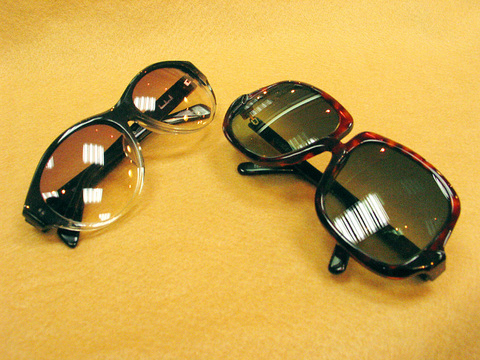
PHOTO COURTESY OF CHRISTIAN ROTH AND SPIVVY
When it comes to athletic eyewear, American and European brands still dominate the market with Oakley, Adidas, Fila and Nike favored by athletes and active types in Taiwan.
WHERE TO BUY
The latest in Japanese and European designer eyewear can be found at department stores and optical outlets island-wide. Popular Japanese brands such as Yellows Plus, Spivvy and Specs Espace average NT$8,500.
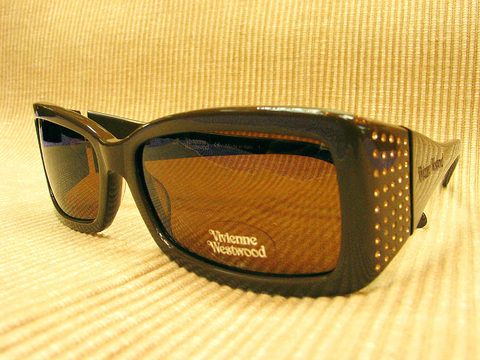
European labels have a wider price range starting at under NT$2,000 but reaching as high as NT$25,000. Most designer frames can also be altered to fit prescription lenses for an additional NT$1,000 to NT$2,000 per pair.
While fakes are illegal to sell or purchase, they have a more attractive price tag at NT$1,500 to NT$3,000 per pair and are often sold outside major department stores.
For cheap thrills, there is no shortage of inexpensive sunglasses made in the not-so-exact image of famous brand names. These can be found at night market vendors and in Ximending for NT$290 to NT$500 a pair. It is unlikely, however, that they have the same ultra-violet (UV) 400-500 polycarbonate lenses for UV protection that optical stores guarantee.
The numerous styles available can make choosing a new pair of sunglasses slightly daunting. Rain Lee (

The canonical shot of an East Asian city is a night skyline studded with towering apartment and office buildings, bright with neon and plastic signage, a landscape of energy and modernity. Another classic image is the same city seen from above, in which identical apartment towers march across the city, spilling out over nearby geography, like stylized soldiers colonizing new territory in a board game. Densely populated dynamic conurbations of money, technological innovation and convenience, it is hard to see the cities of East Asia as what they truly are: necropolises. Why is this? The East Asian development model, with

June 16 to June 22 The following flyer appeared on the streets of Hsinchu on June 12, 1895: “Taipei has already fallen to the Japanese barbarians, who have brought great misery to our land and people. We heard that the Japanese occupiers will tax our gardens, our houses, our bodies, and even our chickens, dogs, cows and pigs. They wear their hair wild, carve their teeth, tattoo their foreheads, wear strange clothes and speak a strange language. How can we be ruled by such people?” Posted by civilian militia leader Wu Tang-hsing (吳湯興), it was a call to arms to retake

This is a deeply unsettling period in Taiwan. Uncertainties are everywhere while everyone waits for a small army of other shoes to drop on nearly every front. During challenging times, interesting political changes can happen, yet all three major political parties are beset with scandals, strife and self-inflicted wounds. As the ruling party, the Democratic Progressive Party (DPP) is held accountable for not only the challenges to the party, but also the nation. Taiwan is geopolitically and economically under threat. Domestically, the administration is under siege by the opposition-controlled legislature and growing discontent with what opponents characterize as arrogant, autocratic

When Lisa, 20, laces into her ultra-high heels for her shift at a strip club in Ukraine’s Kharkiv, she knows that aside from dancing, she will have to comfort traumatized soldiers. Since Russia’s 2022 invasion, exhausted troops are the main clientele of the Flash Dancers club in the center of the northeastern city, just 20 kilometers from Russian forces. For some customers, it provides an “escape” from the war, said Valerya Zavatska — a 25-year-old law graduate who runs the club with her mother, an ex-dancer. But many are not there just for the show. They “want to talk about what hurts,” she